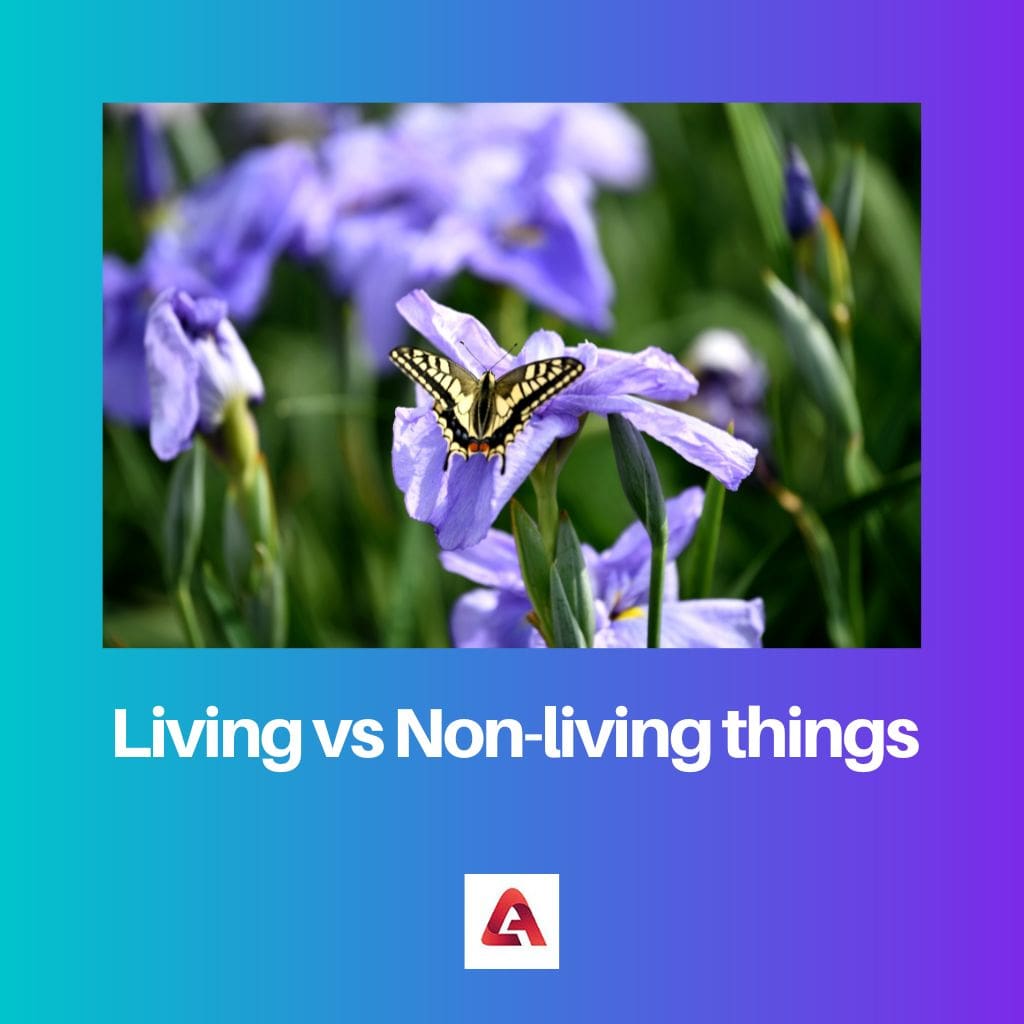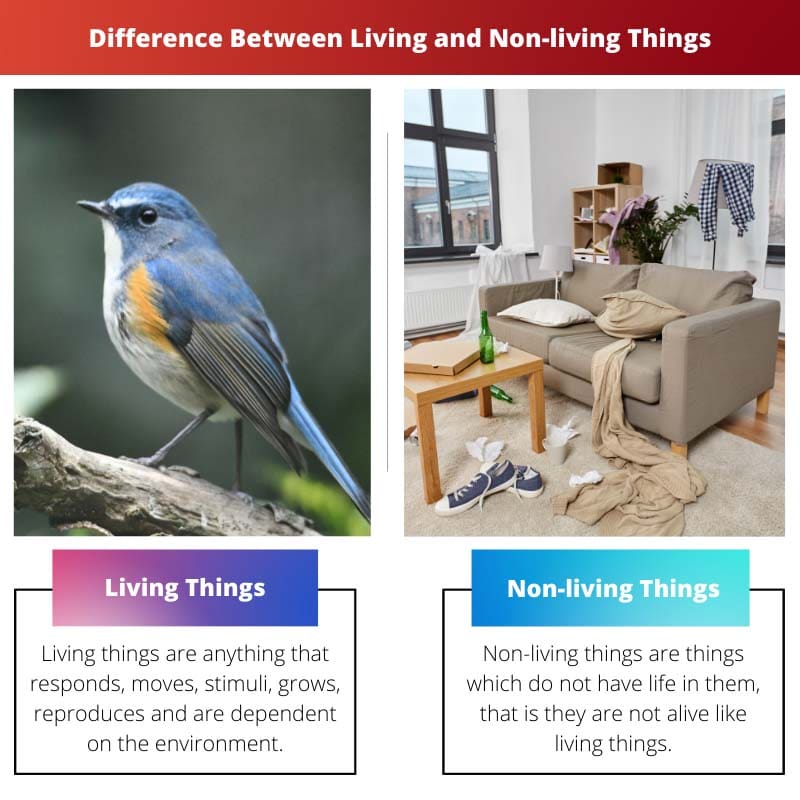Earth is the only planet with life on it; it consists not only of human beings or animals but several other components that constitute life on Earth.
In regular day-to-day life, numerous things are visible which do not have a life, but still, they are important for human beings or animals; the balance of nature has been created so that all things and people are interconnected.
Nature contains everything, including humans, animals, plants, rivers, soil, mountains, oceans, air, etc.
And everything has its importance in nature; there is no substitute for these things; everything plays another role in maintaining a balance of nature.
Everything around which is present on earth, visible or invisible tangent or in tangent, is classified into two main categories: those are living and nonliving things.
Key Takeaways
- Living things exhibit growth and development, whereas non-living things do not change or evolve over time.
- Living organisms require energy and nutrients for sustenance, while non-living objects do not consume resources or produce waste.
- Living beings reproduce and create offspring, whereas non-living things cannot reproduce or generate new instances of themselves.
Living vs. Non-living Things
Living things need certain things to survive, like air, food, and the environment, but nonliving things do not require any. Non-Living things are mostly created by external sources like humans creating pens etc.

Comparison Table
| Parameters of Comparison | Living things | Non-living things |
|---|---|---|
| Definition | Things which possess life. | Things that do not possess life. |
| Examples | Human beings, animals, plants, etc. | Rocks, soil, pencil, books, mobile phones, etc. |
| Requirement for survival | Food, water, and oxygen | Does not require anything. |
| Basic unit | Cell | Atom |
| Growth process | Grows naturally | Grows with the process of accretion. |
What is a Living thing?
Living things are anything that responds, moves, stimuli, grows, reproduces, and depends on the environment. To survive, most living things need water, food, oxygen, and air.
Living things include profoundly animals, human beings, plants, and trees. The nature of living things might not be similar, but the basic requirements like water, food, and air are the same.
Humans are the most advanced species; on the other hand, animals are less advanced than humans, and plants have basic needs like food, water, and air to survive.
The behavior of all living things is different; for example, humans can talk, but animals cannot; animals can walk, but plants cannot.
All of them are different from each other but still considered living things. They are made up of microscopic structures called cells. They experience metabolism, which includes anabolic and catabolic reactions.
Living things grow and mature through different stages of development.
They need nutrition for survival which involves engulfing and digesting food. Some living things are autotrophic, which means they can harness the sun’s energy to make food.
The digested food is eliminated from the body through the process of excretion.
Living things can be single-cellular or multicellular; in single-cellular, the organism is made up of one cell, for example, amoeba, etc.; multicellular organisms are made of more than one cell, for example, human beings, etc.

What is a Non-living Thing?
Non-living things are things that do not have life in them; they are not alive like living things. They do not have characteristics of living things like movement, need for food, air, or water.
Non-living things can be tangible or intangible, movable or stationary. They do not respire, digest, eat, or excrete. They are created and destroyed by external forces. For example, a cycle, pen, pencil, books, etc.
Most non-living things are made by living things and created by living things for their activities. They do not possess cells; rather, they have atoms and molecules. They do not have Metabolism because they do not have Protoplasm.
Non-living things do not die as they do not possess life-like living things.
They do not have a defined structure and can be molded easily in other substances. Non-living things grow by accretion; that is, they can be grown by external forces by adding on materials. The process of reproduction is missing in non-living things.
They can not respond to stimuli like living things, as they do not have sense organs and cannot respond to things like humans, nor can they make food. Rather, their existence is influenced by external forces.
Non-living things are important for the environment and nature as they help provide information about a suitable environment for living things. For example, plants, which are living things, cannot grow without soil, which is non-living.
Thus, their presence cannot be neglected just because they do not possess life. Their contribution is equally important.

Differences Between Living Things and Non-living Things
- Living things have life. On the other hand, non-living things do not possess life.
- Living things can grow or create a new one through reproduction, but non-living things grow through accretion.
- Living things can be single-cellular or multicellular. On the contrary non-living things do not possess cells. Rather, they are made up of atoms or molecules.
- Living things have metabolism and digestive systems, whereas non-living things do not have a metabolism due to a lack of Protoplasm.
- Living things need food, water, air, and oxygen for survival. On the other hand, non-living things do not need food, water, or oxygen.
- Living things respire to maintain their life. On the other hand, non-living things do not have respiratory systems to maintain their life.

- https://www.tandfonline.com/doi/abs/10.1080/02643299208252056
- https://www.sciencedirect.com/science/article/pii/S0010945208708311

This article provides a holistic perspective on the interconnectedness of life on Earth. It’s a thought-provoking read that stimulates contemplation.
Indeed, it compels us to reflect on the intricate relationships that bind all elements of nature together.
The article effectively debunks common misconceptions about living and non-living things. It’s a valuable contribution to scientific literacy.
Absolutely, dispelling fallacies contributes to a more informed understanding of the natural world.
Indeed, addressing misconceptions is essential in promoting scientific literacy.
I’m glad the article included a comparison table and detailed explanations. It makes the information more accessible and easier to understand.
Yes, it was quite informative and helpful in understanding the distinctions between living and non-living things.
I appreciate the emphasis on the importance of non-living things in the environment. It’s a perspective that’s overlooked, and this article does a great job of addressing it.
Yes, non-living things are underrated, but they play a crucial role in maintaining the ecosystem.
I found the section on what constitutes a ‘living thing’ particularly interesting. The detailed breakdown of living organisms and their characteristics was enlightening.
Absolutely, it’s a comprehensive overview that effectively highlights the diverse nature of living things.
Agreed, the article does well in capturing the essence of living organisms and their complexity.
This article is a great reminder of how everything on earth is connected and the importance of the balance of nature. It’s refreshing to see more coverage of topics like this.
I agree. It’s important to keep these conversations going and educate others about the relationship between living and non-living things.
The comprehensive coverage of living and non-living things furthers our appreciation of nature’s complexity. Nature’s intricate tapestry is beautifully elucidated in this article.
Absolutely, the depth of analysis presented in the article is illuminating.
Agreed, the article splendidly unravels the intricacies of nature and its diverse components.
The light-hearted approach to explaining scientific concepts in the article is delightful. It fosters an engaging and enjoyable learning experience.
Indeed, infusing scientific discourse with a touch of levity enhances the learning journey.
Absolutely, the article deftly marries education with an enjoyable reading experience.
The article succeeds in presenting scientific concepts in a clear and engaging manner. It’s a valuable resource for understanding the fundamentals of living and non-living things.
Absolutely, the lucid explanations are conducive to learning about these fundamental concepts.
I share the same sentiment. The clarity of the article is commendable.
The distinction between living and non-living things was elucidated well. The examples provided made the concepts more tangible and relatable.
Absolutely, the use of examples in the article was very effective in conveying the differences between living and non-living things.
Indeed, the practical illustrations enhanced the understanding of these concepts.